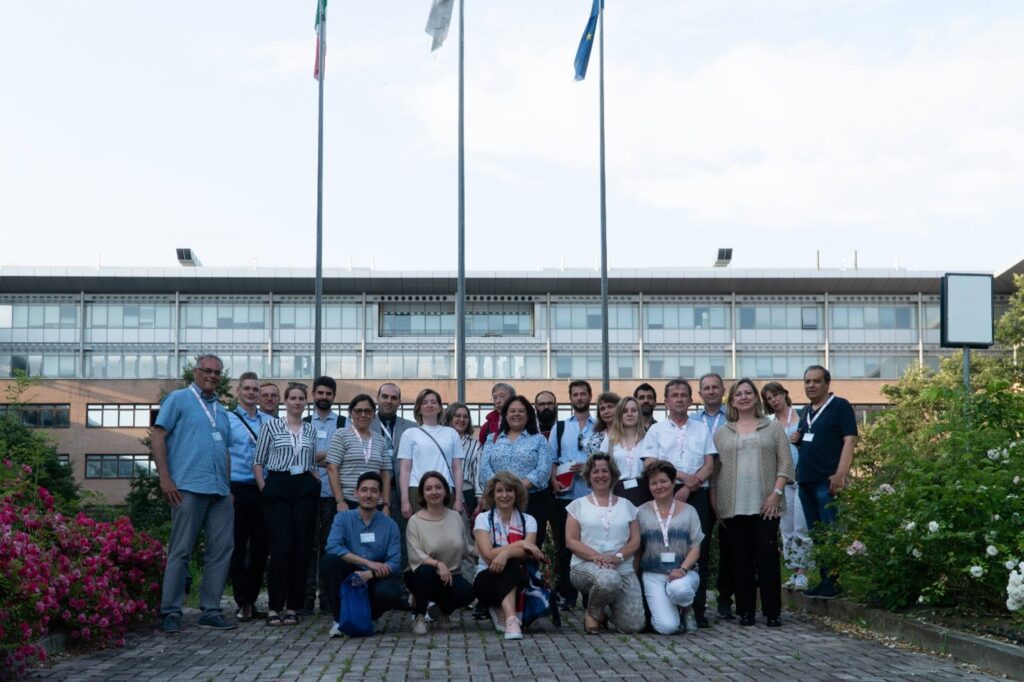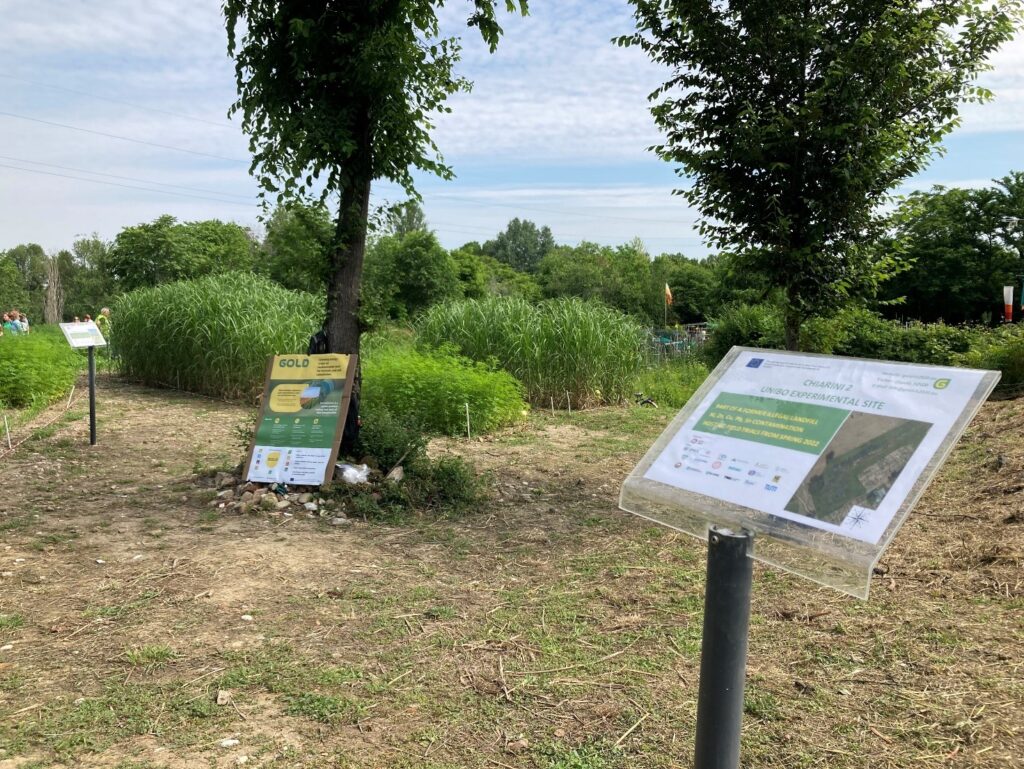GOLD Meeting and Site Visit: Bologna, Italy, 8 -9 June 2023
The GOLD project team met for the second time in person at The University of Bologna, 8-9 June 2023, after many of the partners had participated at the EUBCE (5 – 8 June), that was also held in Bologna, at the Congress Centre. The first part of the meeting, commencing in the afternoon of the 8th of June, consisted of individual Work Package presentations. For WP1: Optimization of selected high-yielding lignocellulosic energy crops for phytoremediation purposes and biofuel production, we heard from each of the partners representing each of the trial sites:

Figure 1: GOLD Trial site locations.
The main outcomes for WP1 in the last 12 months were the completion of Deliverable 1.2, a report on the ‘Comparison of phytoremediation practices for growing selected high-yielding energy crops on contaminated soils’ as well as the completion of the first year of trial crops (autumn 2022), and the commencement of the second year of trial crops (spring 2023).
We were also given an update from all the partners involved in WP2: Conversion processes for clean liquid biofuel production. Each of the tasks in this work package is interlinked and somewhat dependant not only on each other, but also on the outputs of WP1.

Figure 2 Schematic demonstration of the interlinkages between WP1 & WP2.
To round off the technical work packages we heard from WP3: Integrated sustainability assessment for bridging the gap. This work package deals with the viability of this approach in terms of biofuel production by looking at the values chains, sustainability, and life cycle analysis, as well as the difficult task of mapping contaminated land and phytoremediation scenarios across Europe.

Figure 3 An example of the mapping results.

On Friday 9th June the University of Bologna kindly hosted the consortium at the trial site Chiarini 2, on the outskirts of Bologna, to the west. This site has a long history of contaminative use with records dating back to post World War II when the site was used as an illegal dumping ground for industry and craft workshops that were present in the area.
Between 1996 and 2003 a characterization and monitoring activity of the contaminated site began, detecting critical thresholds for various pollutants (heavy metals, heavy hydrocarbons (C>12) and PCBs. Between 2005 and 2009 the main body of the landfill (“Chiarini 1”, green area in the figure below on the right) was subjected to a remediation process through the removal and ex-situ washing of contaminated soil and the replacement of healthy soil. This part of the area has now been returned to the community through the creation of social gardens.
However, during this remediation process a further contaminated area adjacent to the remediated one was characterized: “Chiarini 2” (in yellow in the figure 1 (right)). Due to the huge time and financial investment of a remediation campaign it was decided by the Regional Agency for Environmental Protection of the Emilia Romagna Region (ARPAE) that this area would simply be capped with a HDPE cover (figure 1 (left)), fenced and subsequently monitored in order to make sure that there was no percolation of pollutants into the surrounding ‘clean’ areas. Therefore, in spring 2021 when the GOLD project began its search for a suitable site to trial phytoremediation techniques ARPAE was more than delighted to offer this site to the research project. In the summer of 2021, an agreement was subsequently signed between the UNIBO and the Emilia Romagna Region, with the endorsement of the Municipality of Bologna, to allow the research activities foreseen in WP1 of the GOLD project to proceed.

Therefore, the use of the area for phytoremediation experiments, using biomass crops and biological agents, is appreciated not only for the purposes of the project GOLD, but also in relation to:
- Updating the characterization and contamination status of the site to contribute towards ARPAEs datasets;
- Verify the validity of other remediation methods tested in the area and to assess the potential implementation of phytocapping (permanent vegetation cover, envisaged as a possible measure of protection and safety on landfills);
- Restore and enhance the area benefiting the local community in the municipality of Bologna.
The community has been engaged from the beginning including, a site visit in Spring 2022, organized in collaboration with a local recreational cultural association (ANCeSCAU).
The consortium site visit, carried out on 9 June 2023, was accompanied by officials and representatives from ARPAE, and the municipality of Bologna. UniBo PhD candidate Pietro Peroni led the site tour by explaining the history of the site, the positive outcomes of the first year’s trials, and a tour of this year’s already well-established crops.
Results from the first year have noted a very slight improvement in soil properties in respect to the baseline samples, but not significant. This year, like last year, will include application of soil amendments, as well as chemical anti-weed agents. It is foreseen that the trails will follow the same growing pattern as last year with the harvesting period commencing in autumn 2023, after which the crops and soils will be analysed both for any improvements in soil quality and production of biomass.

Pietro Peroni, UniBo, with a rappresentative from ARPAE.

Representatives from Municipality of Bologna.



Photos of the site and established trial crops at Chiarini 2, Bologna.

